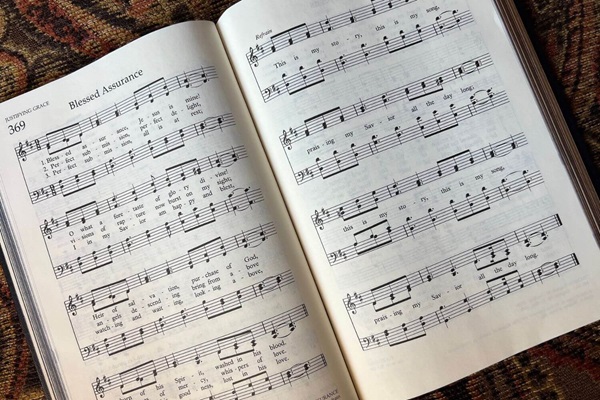In a New York City home in 1873, one friend played a few bars of music on the piano for another friend and then asked, “What does that melody say to you?”
The story goes that the second friend immediately replied, “Blessed Assurance, Jesus is mine! O what a foretaste of glory divine!”
Almost effortlessly and within a few minutes, Fanny Crosby had written the verses and refrain to accompany the music written by Phoebe Palmer Knapp. The beloved hymn, aptly titled, “Blessed Assurance,” (no. 369 in the United Methodist Hymnal), celebrates its 150th anniversary in 2023.
The musical collaboration was among the first between Crosby, a woman who was blind and became known as one of the most prolific hymn writers in history, and Knapp, a successful composer and the daughter of famed Methodist revivalist Phoebe Palmer. Crosby and Knapp ran in the same musical circles in New York, as well as worshipping together at Old John Street Methodist Episcopal Church.
The new hymn was an almost instant hit, as far as hymn popularity goes. In its first year, it was published in three different publications: “Gems of Praise, No. 1 (Methodist Episcopal Book-Room); “Guide to Holiness,” a Methodist periodical published by Walter and Phoebe Palmer; and “Bible School Songs,” edited by Knapp and J.H. Vincent, according to HymnologyArchives.com.
In the past 150 years, the hymn has been published by faith communities throughout the world and has been recorded by the likes of Carrie Underwood, Alan Jackson, CeCe Winans, Glen Campbell and Third Day.
A little about Fanny Crosby
Though blind since an infant, Crosby seemingly never let her lack of sight impede her life. In fact, she often spoke of her blindness as a blessing.
“If perfect earthly sight were offered me tomorrow, I would not accept it,” she said. “I might not have sung hymns to the praise of God if I had been distracted by the beautiful and interesting things about me.” (From” Song Stories: The Stories Behind Worship’s Best Loved Songs, Volume 1”)
Crosby was 44 years old when she wrote the first of more than 8,000 hymns. She collaborated with William B. Bradbury, an accomplished hymn writer, on the first hymn. Their partnership resulted in many songs, as well as a publishing contract with Biglow and Main Publishers. Crosby’s contract required that she write three hymns per week for $2 per hymn. Crosby, who often would write six or seven hymns per day, submitted so many hymns that the publisher requested Crosby write under a pseudonym to avoid the appearance that Biglow and Main only published Crosby’s hymns. Crosby’s songs were listed under 100 pen names, according to “Song Stories.”
A little about Phoebe Palmer Knapp
Knapp, because of her parents’ professions as evangelists, grew up in a home surrounded by religious music. She and her mother often collaborated on hymns with the elder Phoebe writing verses and the younger Phoebe writing melodies on the piano or organ. She is credited with writing music for more than 500 hymns.
An interesting side fact is that Knapp was married to Joseph Fairchild Knapp, who made his fortune in publishing and then went on to found and serve as the second president of Metropolitan Life Insurance Company. The Knapps lived at the Hotel Savoy on Fifth Avenue in New York City, where they owned what was believed to be the largest organ in the world in a private residence.
‘One of the sweetest I had heard’
For Crosby’s and Knapp’s collective body of works, “Blessed Assurance” indisputably was their most successful. Crosby, it seems, also was a fan.
“My dear friend, Mrs. Joseph F. Knapp … had composed the tune, and it seemed to me one of the sweetest I had heard for a long time,” Crosby wrote in “Fanny Crosby’s Life Story” (1903). “She asked me to write a hymn for it, and I felt, while bringing the words and tones together, that the air and the hymn were intended for each other. In the many hundred times that I have heard it sung, this opinion has been more and more confirmed.”
Crystal Caviness works for UMC.org at United Methodist Communications. Contact her by email.
This story was published on April 21, 2023.





